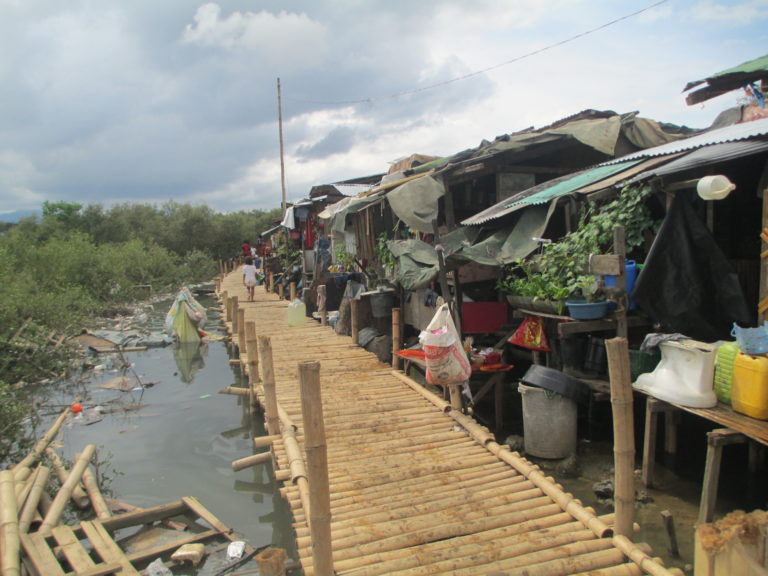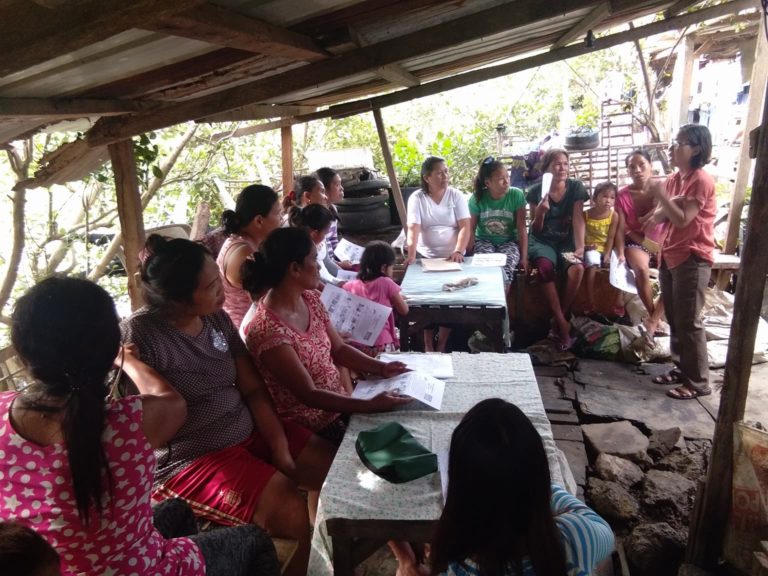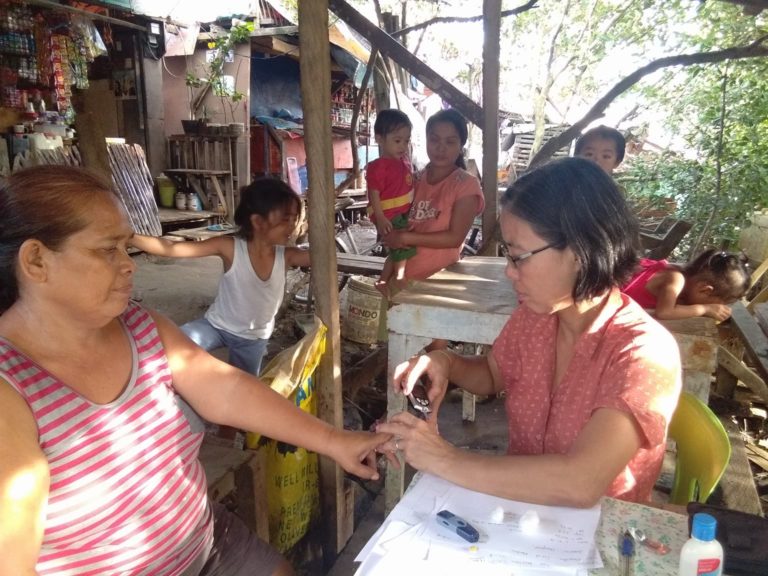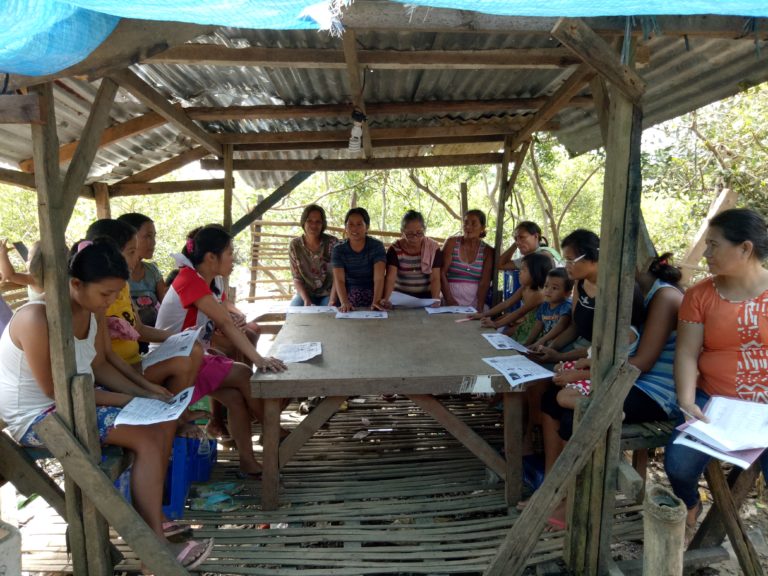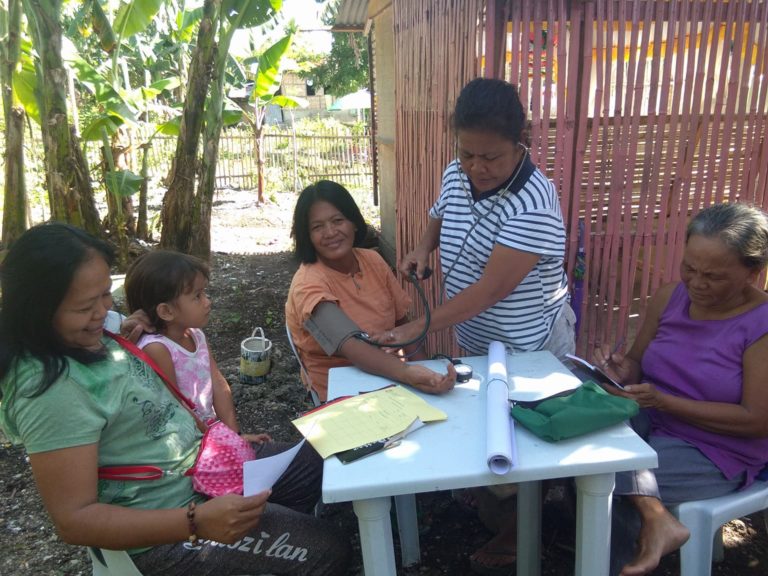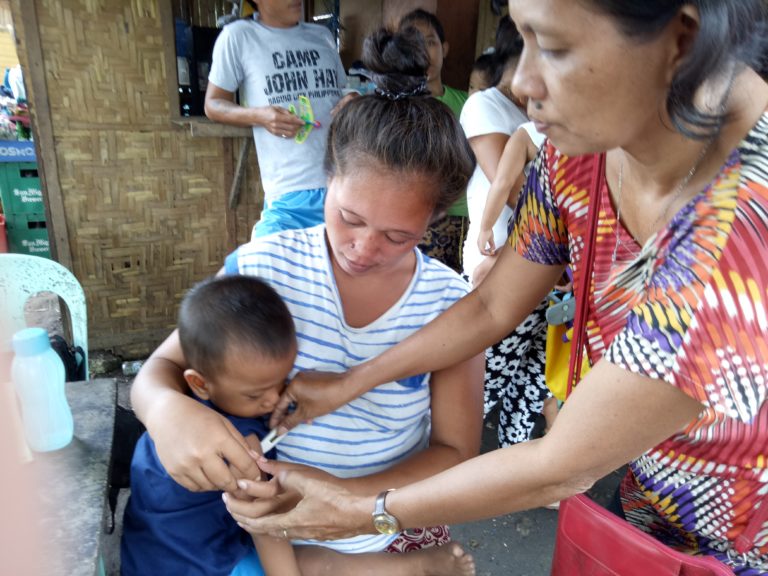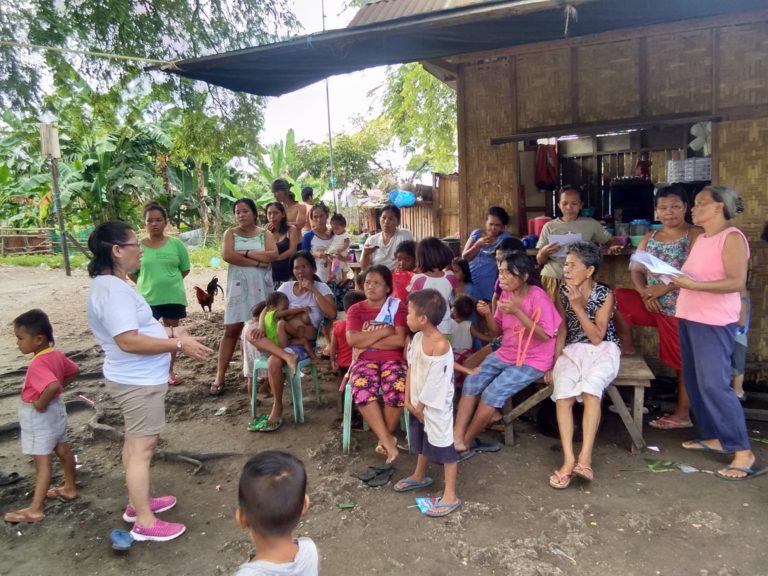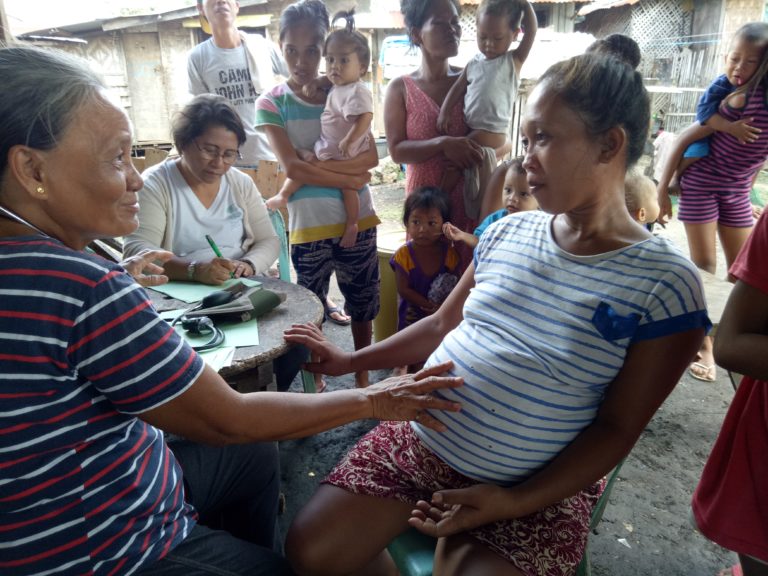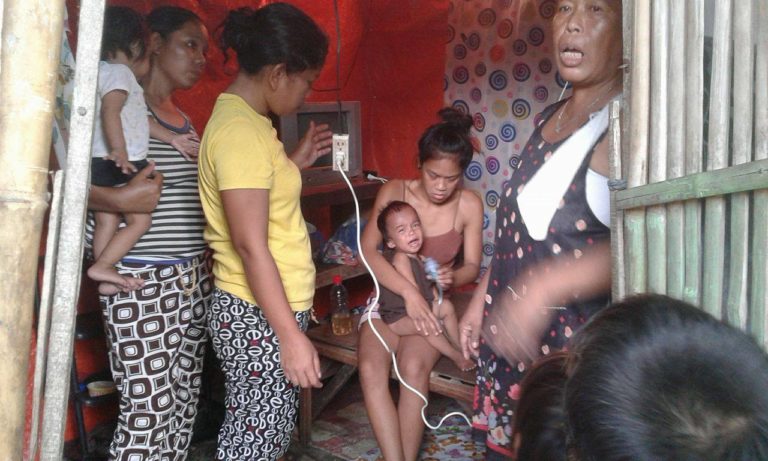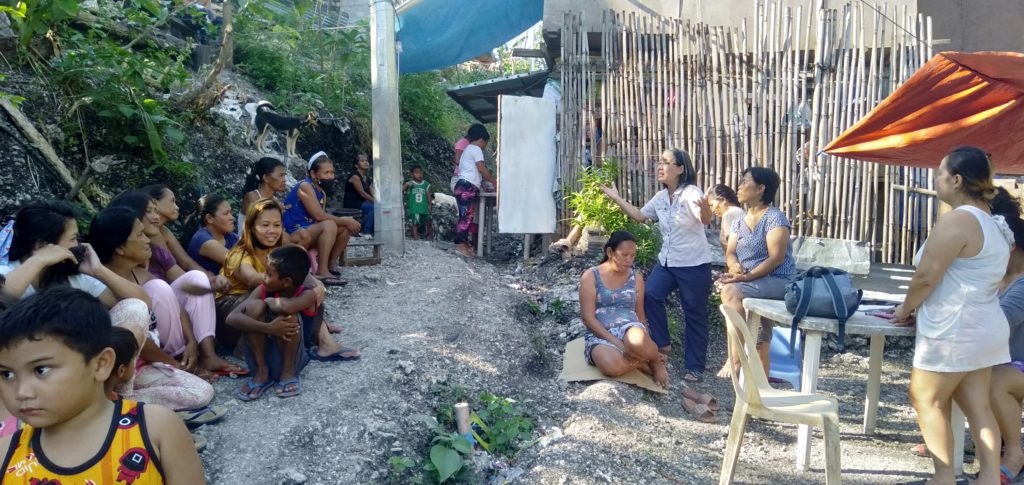During the third quarter of the second year of thecommunity-based health programs (CBHP) project in three communities in Cebu, trained community health workers continued to conduct health education activities and services in pursuit of our goal that the residents will eventually be self-reliant on primary health care.
The project is supported by the Committee of German Doctors for Developing Countries. It is implemented in SitioSawsawan, Barangay San Roque, Talisay City, PurokTambis, Umapad, Mandaue City, and SitioIntramuros, Poblacion Cordova, Cordova.
The issue of Dengvaxia fiasco was a consistent topic in the health education activities in the three communities. Mothers were very worried knowing of the more than 25 deaths among children who were given the Dengvaxia vaccine in different parts of the country. Their own children were recipients of the vaccine. The VPHCS staff conscientiously explained that those who died could probably have severe dengue which was manifested by bleeding in the internal organs as seen in the autopsies of 16 children who died. The manufacturer
of the vaccine, Sanofi- Pasteur had issued a public statement that severe dengue can occur among children who were seronegative for the dengue virus when they were vaccinated. Thus, the VPHCS and the CHWs launched an environmental sanitation campaign to get rid of breeding places of the mosquitoes which are vectors of the dengue virus. Without the breeding places, there will be no mosquitoes that will carry the virus.
Children’s health continued to be a key concern in the project. Foremost is the nutrition program that was sustained in the communities. Growth monitoring of all preschoolers was continued by the CHWs by taking their weights and identifying their nutritional status, whether they were underweight, normal in weight, overweight or obese. Nutrition is a favorite topic in the monthly health education classes, emphasizing the glow, grow and go foods. Malnourished children were followed up through home visits by CHWs who assessed the nutritional practices of their mothers or caregivers and provided information on cheap and easily available food sources.
Vegetable gardens were cultivated in the three communities. In PurokTambis, identified malnourished children availed of the feeding program of the Justice, Peace, and Integrity of Creation (JPIC), the social action arm of the Society of Divine Word. The CHWs helped in the preparation of the meals in the feeding which was conducted four times a week.
Common cough and colds continued to beset the children in the three communities and the mothers with the CHWs continue to use lagundi and oregano as herbal medicine. Mothers generally are now very knowledgeable to detect pneumonia by counting the respiratory rate of their children; fast breathing is a sign of pneumonia which necessitates the child to be brought right away to the health centers. The CHWs point out during their health education activities with the mothers that pneumonia has remained a leading cause of death among children in our country and this is a sad fact since it is preventable if mothers bring their children right away to the health centers for treatment which is only antibiotics.
Mothers with children having diarrhea cases make homemade oral rehydration salt solution using a tablespoon of sugar and a pinch of salt in a liter of clean water, as taught to them by their CHWs in order to prevent dehydration coupled. Construction of toilets, proper disposal of garbage and wastes, and proper storage of household water for drinking particularly in PurokTambis has been ongoing as part of the campaign on environmental sanitation.
Those with continuous diarrhea which were very few cases were quickly referred by the CHWs to the hospitals for admission. Again, like pneumonia, it was emphasized by the CHWs that diarrhea could lead to death due to severe dehydration which is not immediately given medical care.
Skin infections among children were addressed through health education on proper hygiene and treatment not by expensive Western ointments but by temple flower, moringa and hemlock stem coverings that are shredded and cooked in vegetable oil and added with paraffin wax.
As an output of the campaign to address the problem of pulmonary tuberculosis which has remained as one of the top ten leading causes of deaths in our country, there were a few patients who had symptoms of tuberculosis who were referred by the CHWs to the health centers for sputum examination. Those with negative acid-fast-bacilli (the TB germs) results had chest X-ray done in accordance with the government’s Department of Health (DOH) tuberculosis control program. Those with x-ray results that were consistent with PTB were then given appropriate anti-TB medicines in the health centers, together with those who had positive sputum examination test results and did not need Chest X-ray anymore.
On the campaign on hypertension control, through health educations, home visitations BP taking in the homes, the CHWs kept on pointing out to the residents that hypertension is a silent killer and does not present with symptoms until the body organs are affected, such as edema with kidney disease, chest pains and dyspnea with heart failure, or stroke which could leave one paralyzed. Eventually, the residents themselves went to the houses of the CHWs to have their BP taken since they were now more aware through the health education and information drives of the complications of uncontrolled hypertension. Hypertensive patients were all referred to the health centers to obtain their medicines.
Regarding other chronic problems of osteoarthritis, muscle pains, and tension headache which are all work fatigue related, the CHWs addressed these by cooking herbal liniment made of coconut oil soaked with crushed garlic, red pepper and ginger which were cooked in the oil. The warmth of the oil with the healing ingredients of the spices soothed aching joints and headache. Cupping therapy for muscle aches and acupressure for headache were also practiced by the CHWs and taught to the mothers.
Reproductive health including family planning and safe motherhood were also common issues in the health educations. Information drives among the women in the project areas on family planning and methods of birth control such as the natural methods and the use of condoms and pills were conducted in the communities.
